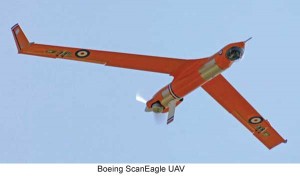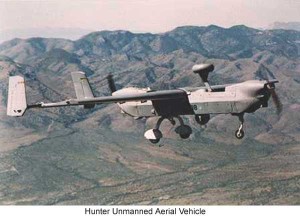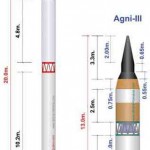In recent times the importance of UAV as a potent force was highlighted by the US. The showcasing of UAV technology during the Bekaa valley operations motivated the US Navy to expedite its own UAV programme. It was the US department of defence which viewed the unmanned vehicles as a key component of the US defence transformation. The US Navy started acquiring UAVs and UCAVs for three primary mission areas: (1) long-dwell, standoff ISR operations; (2) penetrating surveillance/suppression of enemy air defense (SEAD)/strike operations; and (3) tactical surveillance and targeting operations5.Pioneer UAV was procured in 1985 by the US authorities for making available imagery intelligence (IMINT) for spotters for naval gunfire support from its battleships, as well as to provide a UAV capability for the Marine Corps. This UAV was procured for tactical commanders both operating from the land and at sea. This particular machine has supported almost every major US contingency operation. Particularly, during the 1991 Gulf War it had undertaken more than 300 combat reconnaissance missions. Since September 1994, it has flown in contingency operations over Bosnia, Haiti and Somalia. It also flew in Task Force Eagle and IFOR operations over Bosnia during 1995-966.
Also read: Modernization of India’s Military Aviation
Subsequently, within almost a decade’s time major developments took place in the UAV sector and ten different types of UAVs were found employed in Iraq in 2003 to offer constant situational awareness of the location, identity, and movement of hostile forces within a cluttered battle-space. Presently, the various UAV systems are also playing a major role in the conflict in Afghanistan. UAVs were principally used in surveillance and reconnaissance roles during earlier conflicts, but by start of the 21st century they had evolved into sophisticated, air-breathing, hunter-killer platforms7. The idea of UCAVs was perceived and military leadership started looking at this option more seriously in recent times particularly when the role of air power in modern day military conflicts was clearly established in both the Gulf and Kosovo Wars.
The purpose and practice of human sacrifice (particularly that of civilian population) for winning wars is increasingly being challenged.
The developments in the field of UCAVs could be said to have started after verifying that the concept is technically feasible. It was understood by the military leadership that the UCAVs can meet the operational needs and fit into a sound plan of operations. It was argued by the analysts that the historical bias for manned aircraft should not become a stumbling block in embracing this technology in the futuristic technology driven wars8. The campaigns in the Iraq (2003-2010) and Afghanistan (2001) have demonstrated that there is role both for unmanned as well as manned aircraft in the modern day conflicts.
In the 21st century the real strength of Air Power lies with the air-superiority fighters which play a pivotal role in the ability of military forces to gain and maintain air superiority. It is too early to say with certitude that the manned air-superiority fighter could be replaced by the UCAV. However, as per projections, by 2025, the air-superiority UCAV will probably be technologically feasible. For this purpose it is important to achieve major advances in air vehicle, control and payload technologies9.
UAV technology has certain other utilities beyond UCAV role. The concept of multiple UAVs for man hunting operations that can focus concurrently on moving targets is being increasingly visualized. Few automated software’s are making it likely for the UAVs to assist each other in coordinating their search, tracking and interception of the target in a small airspace with a bare minimum input from the operator10.Teal Group is an aerospace and defence market analysis firm based in the US and is known to provide competitive intelligence to industry and government worldwide. As per their 2010 report11 even during the era of recession the UAV sector continued to be the most dynamic growth sector of the world aerospace industry. It has been estimated that UAV spending would double over the next decade from current worldwide UAV expenditures of US$4.9 billion annually to US$11.5 billion, totaling just over US$80 billion in the next ten years. As per this report the US will account for 76 percent of the worldwide research, development, test, and evaluation (RDT&E) spending on UAV technology over the next decade, and about 58 percent of the procurement. It is expected that the likely UAV payloads for the near and distant future would include Electro-Optic/Infrared Sensors, Synthetic Aperture Radars (SARs), Signal Intelligence (SIGINT) and Electronic Warfare (EW) Systems, Command and Control Systems, and Chemical, Biological and Nuclear Sensors.
Also read: Northrop: Achieving Partnership and Growth
UAV technologies over the years have made significant progress. However, the other members of this robotic family namely the Unmanned Ground Vehicles (UGVs) and Unmanned Underwater Vehicles (UUVs) are still in early phases of development. The obvious reason for this is the natures of ‘surface’ which these machines have to face during their operations. There are very less operational limitations on the UAVs because they fly in the open sky and do not encounter any obstacles. However this is not the case for the UGVs or UUVs. Particularly the UGVs have to negotiate with both urban and rural terrain while undertaking operations. Military technologists are trying to overcome the existing limitations of this technology particularly the aspects of automated navigation on the ground.






